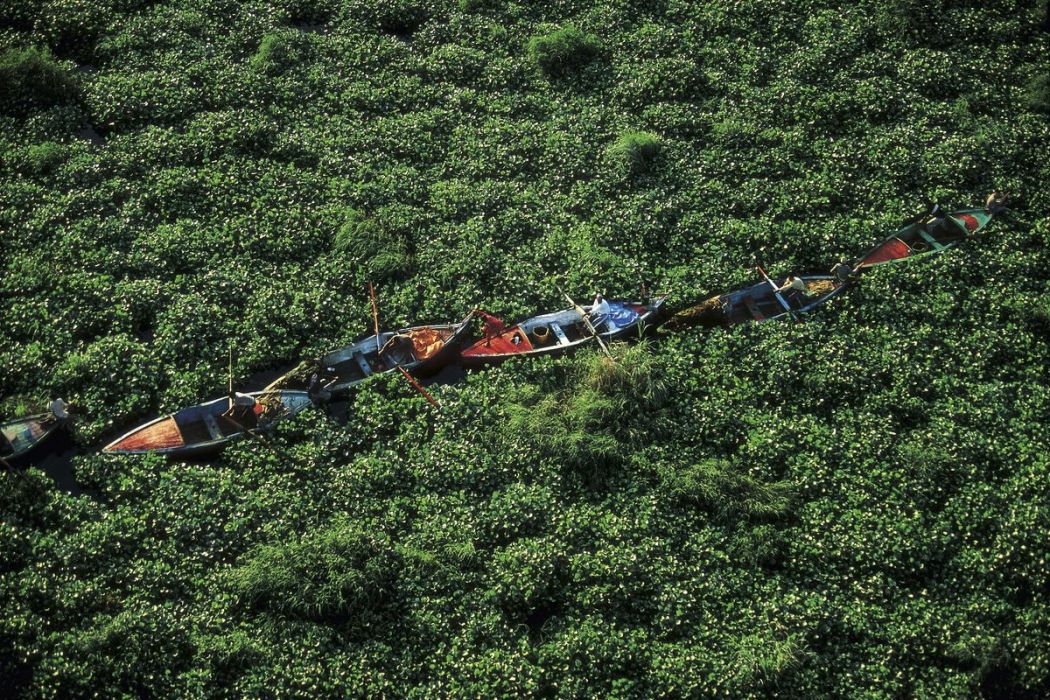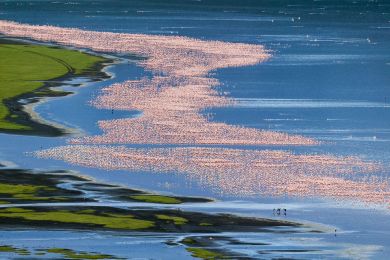By buying this product you can collect up to 178 loyalty points. Your cart will total 178 points that can be converted into a voucher of 35,60 €.
 View larger
View larger
Picture information
Boats on the Nile, Egypt,
Yann ARTHUS-BERTRAND
Art photography by Yann ARTHUS-BERTRAND of boats blocked by the invasive aquatic weed Common Water Hyacinths on the Nile in Egypt. It is originally from Brazil where it develops moderately in its natural habitat. It was introduced on the African continent and elsewhere as an ornamental plant and it has colonized over 50 countries in the world over less than a hundred years.
Data sheet
| Orientation | Landscape |
| Color | Green |
Boats on the Nile, Egypt,
Yann ARTHUS-BERTRAND
Art photography by Yann ARTHUS-BERTRAND of boats blocked by the invasive aquatic weed Common Water Hyacinths on the Nile in Egypt. It is originally from Brazil where it develops moderately in its natural habitat. It was introduced on the African continent and elsewhere as an ornamental plant and it has colonized over 50 countries in the world over less than a hundred years.
Fine Art Photography
Print by Experts
100 % Made In France
A recognized expertise, a search of permanent quality.
Printed by a professional photographic laboratory.
All prints are made to order, controlled by the Technical Director.
A certificate of authenticity is provided with each photograph.
Framework made by selected materials to give you the best results. every step of the processing is monitoring by experts.
Loyalty points
Gift Card
Don't miss the opportunity to do the best present...
The whole Yann Arthus-Bertrand photos available with Hemisgalerie gift card.
Lets your guest choose the best image.
Amount from 50 €, create and download directly on our website, valid for one year including promotions.
The original gift for all events
More info
The Common Water Hyacinth (Eichhornia crassipes) is an invasive aquatic weed. It was signaled for the first time at the beginning of the 20th century in the Nile Delta, in Egypt and in the Natal Province of South Africa. It is originally from Brazil where it develops moderately in its natural habitat. It was introduced on the African continent and elsewhere as an ornamental plant and it has colonized over 50 countries in the world over less than a hundred years. It hinders navigation and obstructs agricultural irrigation canals and the turbines of hydroelectric dams. The thick floating carpet it creates, which surface can double in 12 days, transforms the ecosystem. Preventing sunlight from entering the water column and oxygen exchanges, it considerably reduces the biological diversity in aquatic ecosystems. No effective solution has been found to eradicate this invader but mechanical and biological control methods make it possible to limit its proliferation. Only one percent of introduced species have an adverse environmental impact and cause economic losses in their new environment but their presence is still the second most frequent cause of species extinction in the world after the destruction of natural habitats.













































































